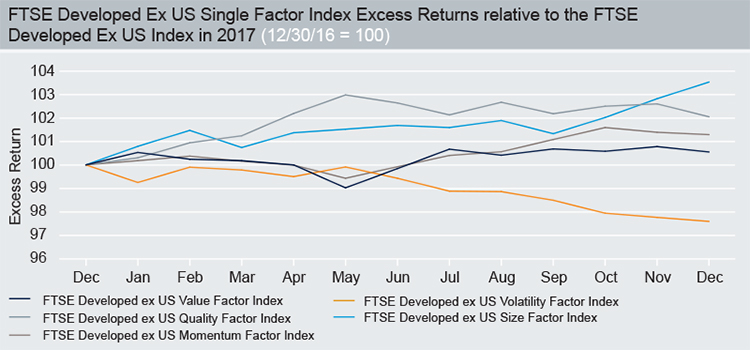By Rob Bush, DWS
Despite their predominantly American heritage, factors, it turns out, still like to pack their bags and travel. And we’d argue this is a good thing. Just as you might put more credibility in a colleague’s world view if it has actually been honed by international experience, so it lends weight that factors can stamp their passports and work in both domestic, and international, markets. And, of course, why shouldn’t they – after all, ultimately factors are attempting to exploit behavioral anomalies that we should have every reason to believe are at least as prevalent abroad as they are in the U.S.
Here at Deutsche Asset Management, we offer a number of factor based strategies, including those based on international indexes, developed and emerging. Of course a blog like this is not the right forum for a deep dive, but I did want to share just three thoughts on the arguably less discussed topic of international factor investing:
- What factors worked in the international developed markets last year
- Why low correlations are also seen internationally, and why that’s a good thing
- What countries, and sectors, international factors like
2017 – What worked…and what didn’t
Figure One: The excess returns to value, size, momentum, quality and low volatility in the international developed markets in 2017 (12/16-12/17)
![]()

Source: FTSE Russell for the period of 12/16 through 12/17. Past performance may not be indicative of future results. See glossary for index definitions. Cannot invest directly in an index.
As Figure One shows, four of the five main factors that one of our multifactor ETFs tilts towards, outperformed the vanilla market cap weighted index last year. There are three main points of interest that we take from this:
- First, that multifactor approaches have benefitted from holding diversified baskets of excess return sources. Clearly, a single factor low volatility approach would not have worked last year in international markets. Holding all five factors however led to outperformance.
- Secondly, note that there was a very large divergence in 2017 between excess returns to the size factor across US, international developed, and international emerging markets. In the US in 2017, and in emerging market (EM), large cap stocks had strong years leading to a negative return to size tilts. In international markets however a size tilt helped last year. So it’s not the case that a factor that worked, or not, in the US market has to have a similar performance abroad.
- Finally, note the puzzle of the Quality factor doing well internationally. Quality is typically thought of as a more defensive factor that does better during downturns. That it had a decent showing in these markets last year points to yet another of the difficulties of factor timing – getting the market cycle call right, and having the factor perform as you’d expect under those conditions. Again, we think that holding multiple factor exposures over the long run and not trying to time them can mitigate this risk.
The excess returns of your international factor premia are relatively uncorrelated? Score!
Let me take a second or two and unpick the title to this section because, lightheartedness aside, it is actually a very important feature of factor investing. First, let’s define some terms. When I talk about “excess returns” for factors I mean the difference between a single factor index, and its vanilla, market-cap underlying index (the same metric in fact from the chart). Over the long run, we argue that, in most cases, the difference ought to be positive, and that comparing a single factor index to a vanilla index is a good way to glean insights into whether that factor has worked.
Second, when we look at a time series of those excess returns, it turns out that both domestically, and internationally, they tend to be relatively uncorrelated. What exactly does that mean? Well, for the five factors that we use, it means that the correlations of the ten pairs of factors (five factors lead to ten unique pairs) are, roughly speaking, not too strongly positive in many cases (strongly positive is bad, strongly negative is good). Why does this matter? Well, it matters for the obvious reason that uncorrelated returns lower risk.
